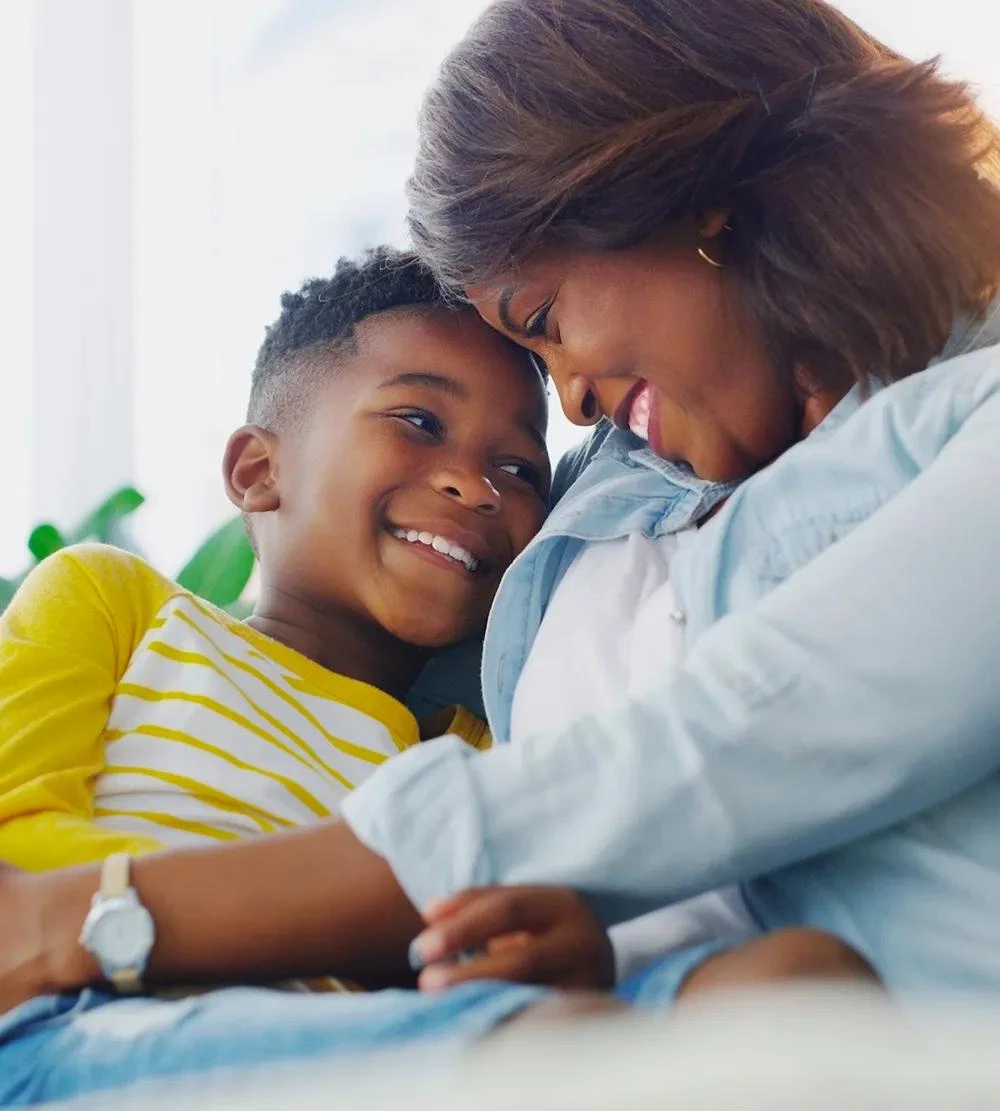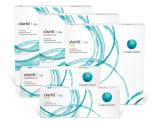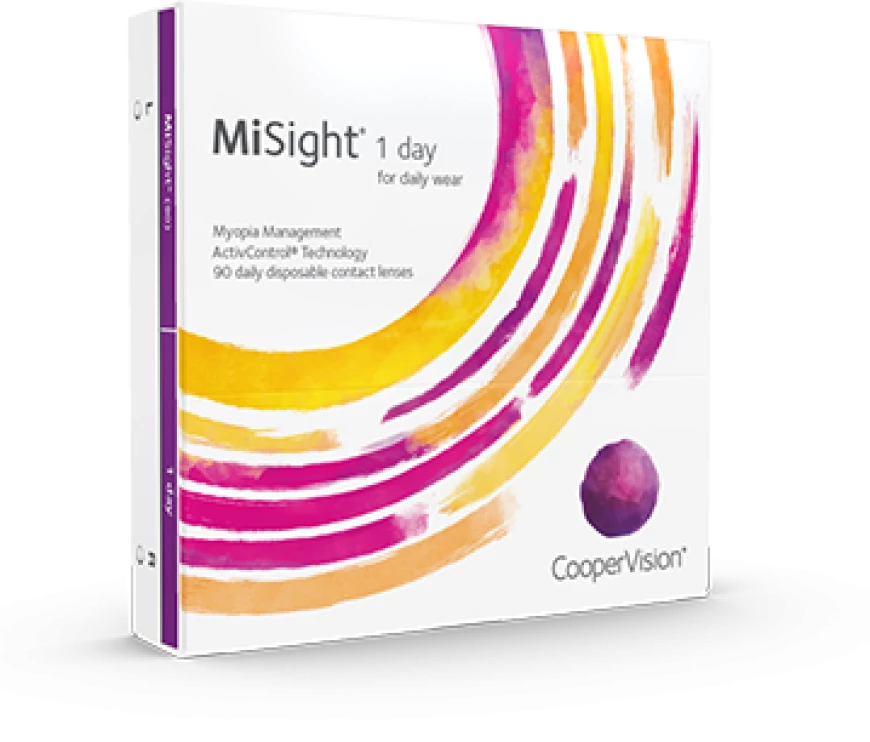Myopia management today could mean less worry tomorrow
If you’ve happily worn glasses or contacts all your life, it might seem excessive to start managing myopia in children as young as eight years of age. However, worsening myopia may contribute to more severe eye health complications and sight-threatening conditions later in life, including:2-5
Retinal detachment
A condition that occurs when the retina, a thin layer of tissue that surrounds the inside of the eye, pulls away from supportive layers of blood vessels that provide its necessary oxygen and nourishment.2
Myopic maculopathy
A condition caused by the deterioration of the central portion of the retina, and is a leading cause of severe, irreversible vision loss.3
Glaucoma
A condition, usually linked to pressure inside the eye, that causes damage to the eye’s optic nerve, potentially causing irreversible vision loss and blindness. Studies show people with myopia have a 2-3x greater risk of developing glaucoma.4
Cataracts
A clouding of the lens of the eye that can cause changes in vision. Though cataracts can affect everyone as they age, they often develop sooner in patients with myopia.5
MiSight® 1 day as part of a Myopia Management Program

Comprehensive support

Knowledge

Tools
Managing your child’s myopia—both today and in the future—requires more than just vision correction.
That’s why we’re taking steps to establish a new standard of care for treating myopia in children, including the use of MiSight® 1 day contact lenses.
Helping your child manage their nearsightedness starts with a comprehensive eye exam. Your Eye Care Professional will be able to determine the amount of vision correction your child needs now, and tell you if they’re a good candidate for wearing MiSight® 1 day contact lenses to help slow future myopia progression. They’ll also factor in lifestyle considerations as part of your child’s myopia management plan. For many nearsighted kids, limiting the daily amount of near work and increasing their time spent outdoors can help slow their rate of progression.
The journey toward a brighter future starts today.
*USA Indications for use: MiSight® 1 day (omafilcon A) soft (hydrophilic) contact lenses for daily wear are indicated for the correction of myopic ametropia and for slowing the progression of myopia in children with non-diseased eyes, who at the initiation of treatment are 8-12 years of age and have a refraction of -0.75 to -4.00 diopters (spherical equivalent) with ≤ 0.75 diopters of astigmatism. The lens is to be discarded after each removal. Canadian Indications for use: MiSight (omafilcon A) Soft Contact Lenses for Myopia Control may reduce the rate of myopia progression in children (6-18) and correct ametropia. Reduction of myopia progression was observed in children with wearing time of 12 hours (8-16 hours) per day, 6.4 days (5-7) per week in a clinical study. Permanent myopia control after lens treatment is discontinued is not supported by clinical studies. MiSight (omafilcon A) Soft Contact Lenses for Myopia Control are indicated for single use daily disposable wear. When prescribed for daily disposable wear, the lens is to be discarded after each removal.
†Compared to a single vision 1-day lens over a 3-year period.§Children aged 8-12 at the initiation of treatment. ¶No clinically meaningful change in refractive error -0.25D or less from baseline.|Overall experience as defined as children's comfort, vision, lens handling, and freedom from spectacles. Children aged 8-15 years.
References:
1. Chamberlain P, et al. A 3-year randomized clinical trial of MiSight® lenses for myopia control. Optom Vis Sci. 2019; 96(8):556-567.
2. Chen SJ, et al. Prevalence and associated risk factors of myopic maculopathy in elderly Chinese: the Shihpai eye study. Invest Ophthalmol Vis Sci. 2012;53(8):4868-4873.
3. Chen SJ, et al. High myopia as a risk factor in primary open angle glaucoma. Int J Ophthalmol. 2012; 5(6):750-753.
4. Younan C, et al. Myopia and incident cataract and cataract surgery: the blue mountains eye study. Invest Ophthalmol Vis Sci. 2002;43(3625-3632.
5. Holden BA, et al. Global Prevalence of Myopia and High Myopia and Temporal Trends from 2000 through 2050. Ophthalmology. 2016;123(5):1036-42.
6. Morgan P. Is Myopia Control the Next Contact Lens Revolution? OPTICIAN 2016
7. Gifford P, Gifford, K L. The Future of Myopia Control Contact Lenses. Opt Vis Sci. 2016;93(4):336-43.
8. Rose KA, Morgan IG, Ip J, et al. Outdoor Activity Reduces the Prevalence of Myopia in Children. Ophthalmology 2008;115(8):1279-85.
9. Wolffsohn JS, Calossi A, Cho P, et al. Global Trends in Myopia Management Attitudes and Strategies in ClinicalPractice. Cont Lens Anterior Eye. 2016;39(2):106-16.
10. Chamberlain P, Arumugam B, Jones D et al. Myopia Progression in Children wearing Dual-Focus Contact Lenses: 6-year findings. Optom Vis Sci 2020;97(E-abstract): 200038.
11. CVI data on file 2018. 3- year study report.
12. Sulley A et al. Wearer experience and subjective responses with dual focus compared to spherical, single vision soft contact lenses in children during a 3-year clinical trial. AAO 2019 Poster Presentation.


![]()
![]()
![]()
![]()
![]()
![]()


![]()
![]()
![]()











